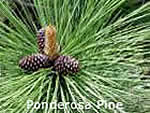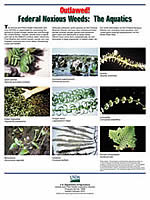USDA Forest Service Celebrating Wildflowers
|
|
|
Wind and Water PollinationMany flowers are pollinated without the aid of animals (insect, bird, or mammal). Here are a few examples. Wind PollinationMost conifers and about 12% of the world’s flowering plants are wind-pollinated. They include grasses and their cultivated cousins, the cereal crops; many trees; the infamous allergenic ragweeds; and others. All release billions of pollen grains into the air so that a lucky few will hit their targets. Wind-pollinated flowers are typically:
Water PollinationPollen can also float on the water’s surface drifting until it contacts flowers. This is called surface hydrophily and is relatively rare. This water-aided pollination occurs in waterweeds and pondweeds. In a very few cases, pollen travels underwater. Many of the water-pollinated plants have become invasive throughout the United States. To learn more, visit these invasive species websites: |
|
| Ants | Bats | Bees | Beetles | Birds | Butterflies | Flies | Moths | Unusual | Wasps | Wind & Water | |
| NOTE: PDF format links require the Adobe Acrobat Reader to view. | |
| top | Disclaimers | FOIA | Privacy Policy | Quality of Information | Photo Credits & Use |
Location: http://www.fs.fed.us/wildflowers/pollinators/wind.shtml
Last modified: Tuesday, 20-May-2008 15:56:26 EDT


